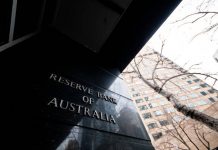Key insights from the week that was.
In Australia, the RBA’s decision to leave the cash rate unchanged at 3.85% came as a surprise to most market participants and economists who were anticipating a 25bp cut. Notably, the first-ever release of unattributed votes showed it was a split decision, with 6 members in favour of holding and 3 against. While the Board recognised continued progress with inflation – now within the target range and close to the midpoint on more timely measures – part of its justification to delay further policy relief rested on recent monthly data being “at the margin, slightly stronger than expected”. Moreover, the Board continued to emphasise uncertainty on many fronts, including: the impact of US tariffs on global trade and growth; the shape of the recovery in Australian domestic demand; and tightness in the labour market. All of these factors have the potential to materially impact Australian inflation over time.
As summarised by Chief Economist Luci Ellis in a video update midweek, in opting to delay rate relief, the Board is looking to confirm inflation is continuing to track towards the midpoint of the target range via the detailed quarterly inflation data due 30 July. We expect this condition to be met and the Board to deliver a 25bp rate cut at its August meeting, to be followed by another three 25bp rate cuts on a quarterly timetable to a broadly neutral cash rate of 2.85% by mid-2026.
Before moving offshore, it is worth quickly noting that the latest NAB business survey provided a more positive read on both conditions and confidence this week, up 8pts and 3pts respectively. That said, these gains follow an extended run of weak readings. Until a more robust recovery in consumer demand takes hold, business conditions are likely to remain fragile.
Offshore, the focus was on the timing and scale of US tariffs as the post Liberation Day 90-day negotiation period ended.
Through the week, US President Donald Trump and the White House began to outline the tariff rates that will be imposed on US imports from individual countries beginning 1 August. The proposed rates are broadly aligned with the original “reciprocal” tariffs announced on Liberation Day, although there are exceptions. Brazil is the best example; their exports to the US will face a 50% tariff from 1 August compared to the 10% tariff proposed at the beginning of April, and were justified by President Trump on both trade and political grounds. This followed a broader threat from President Trump to impose an additional 10% tariff on countries who “align” themselves with the BRICs nations (now a group of 11 nations, led by Brazil, Russia, India and China) having perceived some of their policies as “Anti-American”. Copper imports to the US were also targeted this week, a 50% tariff to be added on top of existing country-specific tariffs from 1 August. And President Trump also confirmed plans to implement a 200% tariff on pharmaceutical imports to the US at a later date.
Based on the announcements to date, US allies in Asia such as Japan and South Korea will not receive preferential treatment, the 25% tariff rate applied to imports from Japan and South Korea only marginally below China’s 30% rate and above Vietnam’s 20% (for its domestic production). Just as we go to press, President Trump has also announced a 35% tariff for Canada and is eyeing a 15-20% rate for most other nations.
For Asia, it should be recognised that existing tariffs and exemptions mean the effective rate for Japan and South Korea is closer to Vietnam’s 20%, and that for China it is circa 40%. Still, the latter rate is manageable for China, and the terms the US is agreeing with other Asian nations such as Vietnam do not stop China from continuing to diversify its production base and political connections across the region. Counter to the US’ intent, a likely consequence of the US taking a hard line on the BRICs is a strengthening of China’s economic and financial ties with the rest of the group, opening up new opportunities for both commodity supply and export growth.
Coming back to Washington, the minutes of the FOMC’s June meeting showed Committee members were positive on the outlook for the economy at the time of the meeting, believing “the risks of higher inflation and weaker labor market conditions had diminished… citing a lower expected path of tariffs”. Nonetheless, risks “remained elevated” and, from their discussion, the Committee seems to feel they will remain a challenge to assess for some time. More Committee members currently believe risks to inflation are of greater concern than those for the labour market. And, while the consensus view remains that the impact of tariffs on inflation is likely to be temporary, it could still take a number of months to show clearly in the data. There is also a risk above-target inflation proves persistent.
In terms of the immediate outlook for US monetary policy, only a “couple” of members were open to considering a rate cut “as soon as the next meeting”. “Some” instead “saw the most likely appropriate path of monetary policy as involving no reductions in the target range for the federal funds rate this year”. Remaining on hold while the myriad of immediate risks are assessed and thereafter taking a very cautious approach to easing looks to be the majority view of the Committee.













